Results show partial and complete growth recovery after temperature, feed challenge
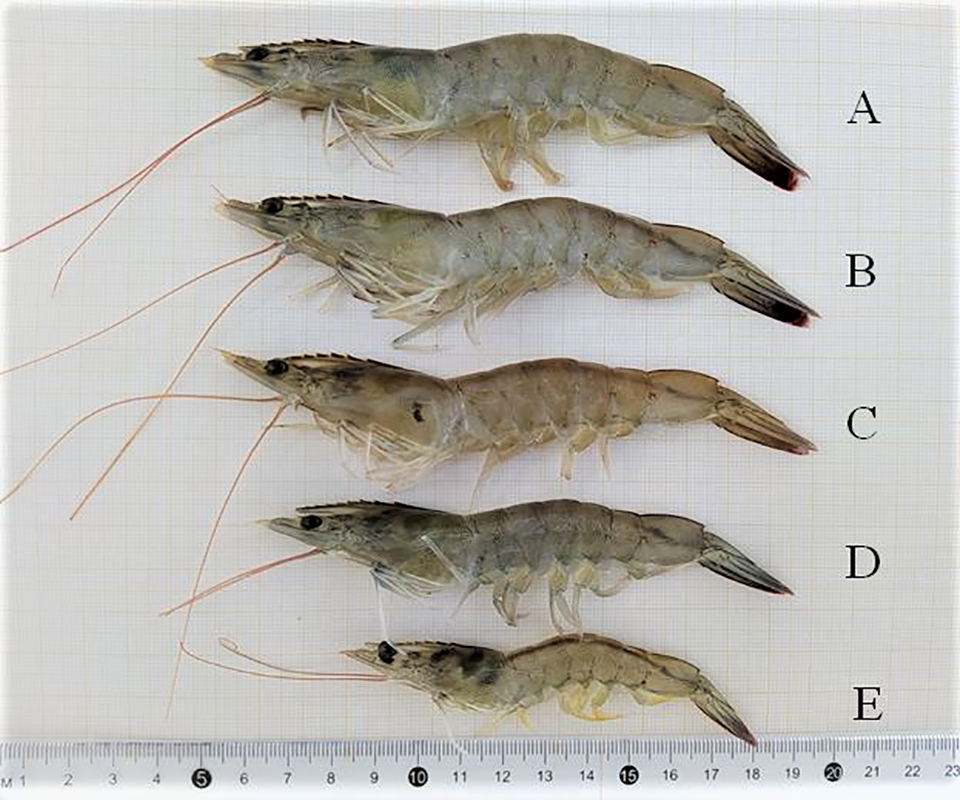
One of the potential management measures to improve shrimp production is the application of biofloc technology (BFT), which brings several production advantages compared to the traditional systems in ponds. BFT systems improve water quality, because there is no water renewal to consequently reduce or eliminate effluents.
Additionally, these systems make it possible to increase stocking density, improve biosafety and remove nitrogen compounds through absorption by the microorganism community. This community also acts as a food supplement for the shrimp, providing a constant feed supply 24 hours a day and also enabling a reduction in the protein levels in any manufactured feeds used.
Compensatory growth is defined as a physiological process where the organism goes through a rapid phase of growth after a restricted period of development. It varies according to the species, life stage, environmental conditions, severity and duration of restriction as well as how the organism responds once improved or ideal culture conditions are restored. Compensatory growth has been explored with several aquaculture species (including shrimp) under different conditions, including feed restriction, hypoxia, high densities and temperatures, and exposure to toxic compounds. It can occur at varying degrees (Fig. 1), according to the classification below from Ali et al. (2003):
1) Full compensation, where organisms that have suffered some deprivation reach the same weight as animals that remained under adequate conditions.
2) Partial compensation, where animals that have undergone restriction present rapid growth rate and may have better feed conversion ratios during the recovery period, but do not reach the same weight of animals kept in adequate, control conditions.
3) Over-compensation, where animals that have experienced the restriction reach a larger weight than the control animals.
4) No compensation, when animals that have suffered some stress do not grow anymore when the optimal conditions are re-established.
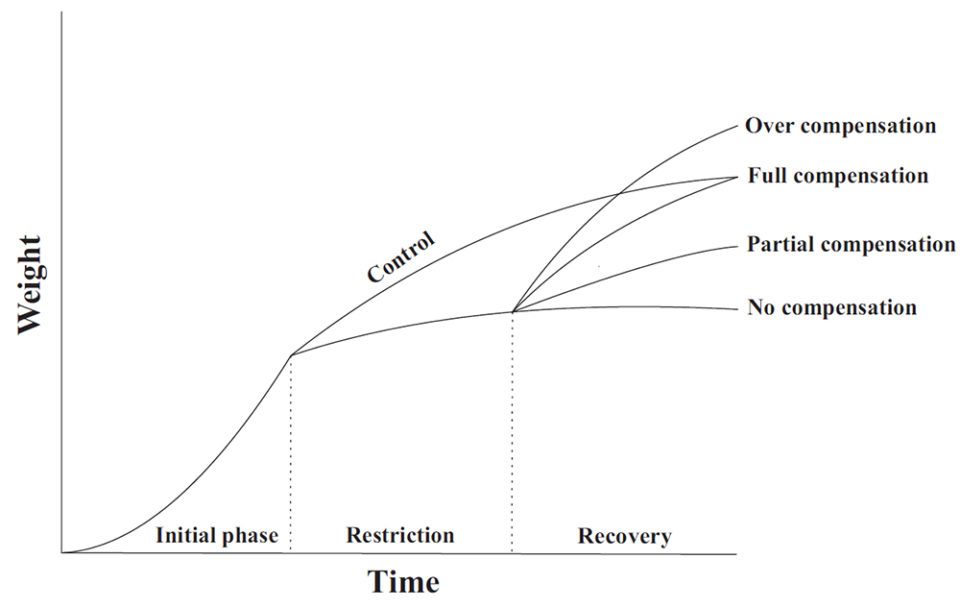
The production of Pacific white shrimp (Litopenaeus vannamei) in BFT systems has been growing in Brazil, mainly in the South and Southeast regions. In these regions, production is often limited due to low temperatures during the autumn and winter seasons. Thus, the evaluation of compensatory growth after re-establishment of optimal temperatures for the species would allow the production of two or more annual harvests despite the low growth rates experienced during the autumn and winter.
In addition to exploring compensatory growth from temperature changes, an evaluation of the effects of this process involving feed management is relevant, because manufactured feed is the main production cost – as much as 60 percent – in intensive shrimp farming. Therefore, the use of feed restriction as a trigger for subsequent compensatory growth could be a strategy for reducing feed requirements and costs.
We carried out a study to evaluate the occurrence of compensatory growth in L. vannamei shrimp at different temperatures and under feed restriction at 28 degrees-C. It was conducted at the Marine Station of Aquaculture (EMA), of the Institute of Oceanography, Federal University of Rio Grande in Southern Brazil.
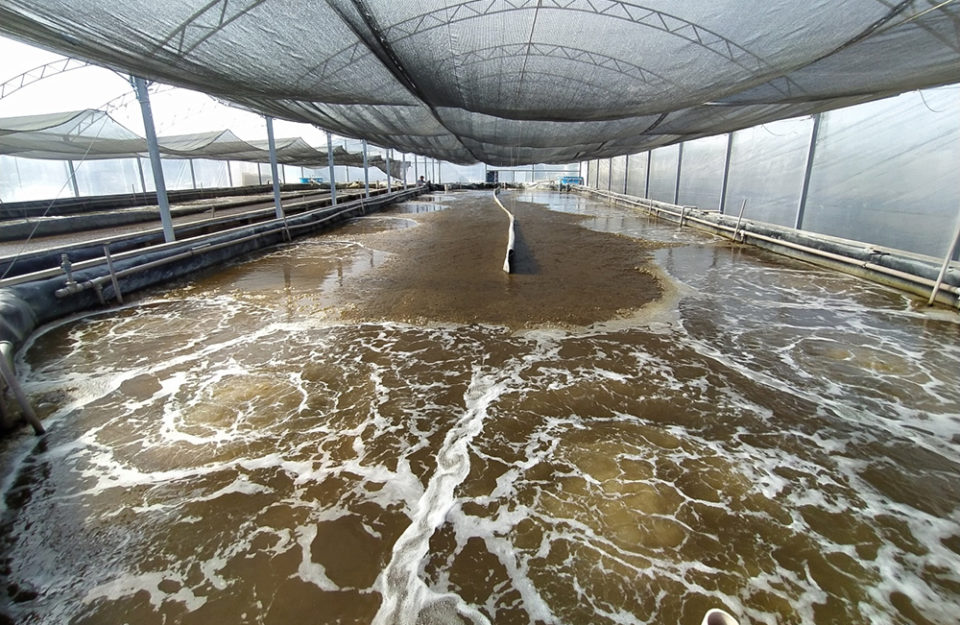
Study setup
L. vannamei juveniles (initial weight 1.78 grams ±0.38) were initially stocked at a density of 300 shrimp per cubic meter. All of the experimental units were filled with 10 percent of their total volume with biofloc-rich water from a grow-out raceway. Two treatments were used – temperature and feed restriction – in the 65-day trial, which was divided into two phases: (1) a restriction period and a recovery period.
To evaluate the compensatory growth at different temperatures (Experiment 1), three treatments (in triplicate) were used, where the animals were exposed to three temperatures (20, 24 and 28 degrees-C) during the first phase and, subsequently, all the experimental units were placed at 28 degrees-C for 30 days (second phase – recovery).
Regarding food restriction (Experiment 2), two treatments (in triplicate) were used: (1) control, where the animals received 100 percent of the recommended feed during the entire experimental period; and (2) restriction, where the animals received only 40 percent of the amount of feed offered to the control group in the first 35 days of the experiment (first phase) and, then were fed at 100 percent like the control group (second phase – recovery). All experimental units were maintained at 28 degrees-C during Experiment 2.
In both experiments, the animals were fed with a 38 percent protein commercial shrimp diet (Guabi®) twice a day using feeding trays.
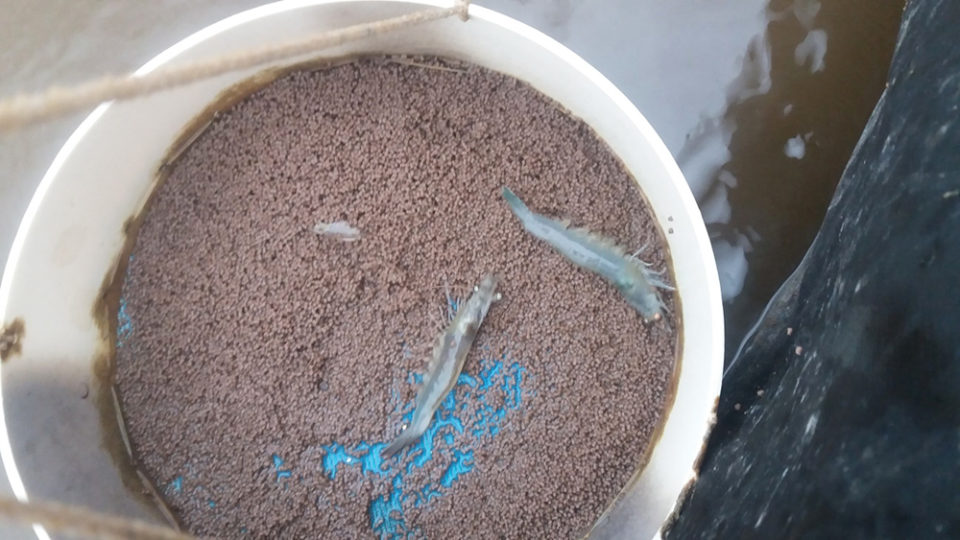
During the study, water temperature, dissolved oxygen, salinity, and pH were monitored twice a day. Total ammonia, nitrite and alkalinity were monitored three times a week, while nitrate, phosphate and total solids were monitored once a week. The alkalinity and pH were corrected according to Furtado et al. (2011) using hydrated lime to maintain concentrations higher than 150 mg/L and 7.2, respectively.
Results and discussion
Water quality parameters – including dissolved oxygen concentrations, salinity, pH, ammonia, nitrite nitrate, alkalinity, total suspend solids and phosphate – were maintained within acceptable levels for L. vannamei throughout the study.
For Experiment 1, at the end of the first and second phases, animals in the 20 and 24 degree-C treatments presented a significantly lower final weight than shrimp in for the 28 degree-C treatment (Fig. 4), indicating that partial growth compensation had occurred but not full compensation. The survival rates between treatments did not present significant differences, and animals in the 20 and 24 degree-C treatments also reached high weekly growth rates during the recovery period (Fig. 5).
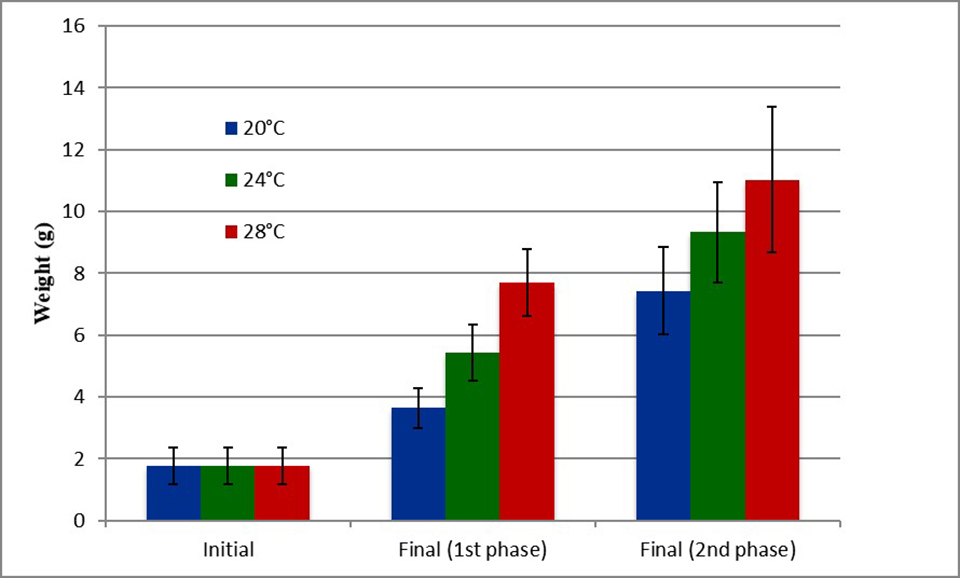
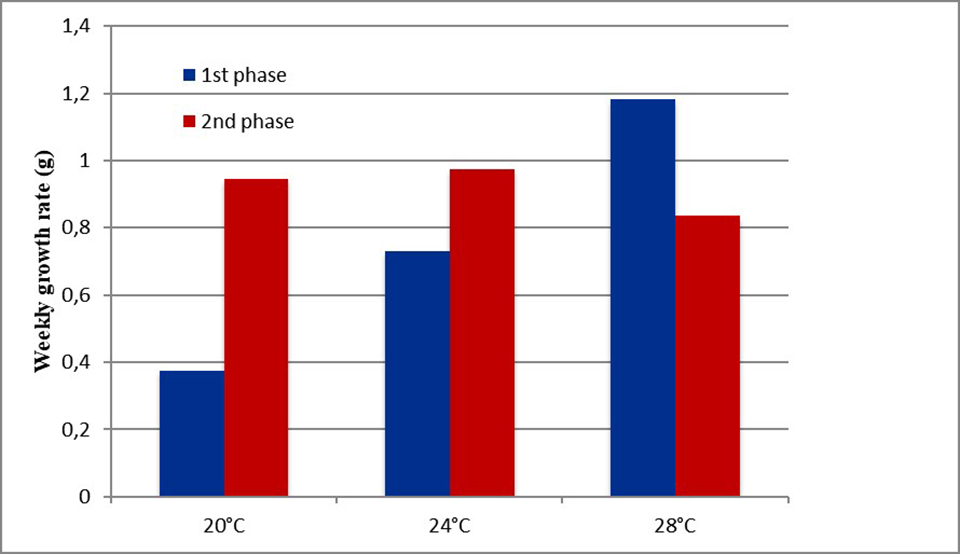
For Experiment 2, at the end of phase 1 (food restriction), animals in the treatment that received 40 percent of the feed had a significantly lower final weight and the survival rate was not affected by the feed restriction. At the end of the second phase (recovery), the final weights did not present significant differences, indicating that full compensation had occurred once the optimal conditions were re-established.
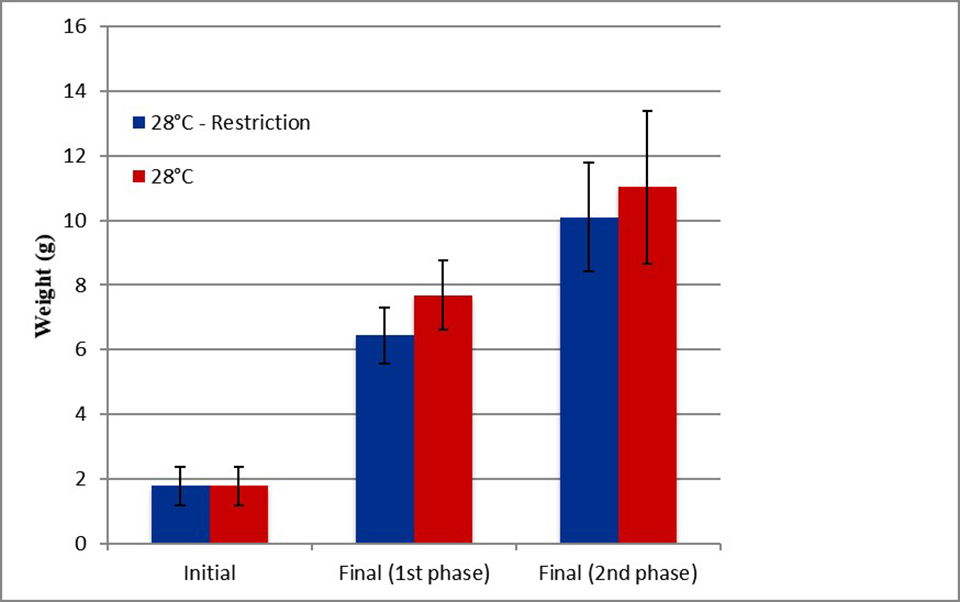
Conclusions
In regions with subtropical or temperate climate where shrimp production is limited by low temperatures during autumn and winter – such as southeast and southern Brazil – it is possible to maintain L. vannamei at low temperatures for a long time with low growth rates and subsequent partial growth recovery. In this case, survival is not affected and the shrimpthat have been subjected to feed restrictions subsequently exhibit rapid growth rates.
Regarding feed restriction, it is possible to reduce the amount of feed offered during a growing period to reduce feed costs and to improve water quality. In this case, the shrimp may show complete compensatory growth. This process is facilitated in BFT systems where shrimp have natural, supplementary feeding available 24 hours a day, thus reducing the negative impact of feed restrictions.
Additional references available from corresponding author.
Now that you've finished reading the article ...
… we hope you’ll consider supporting our mission to document the evolution of the global aquaculture industry and share our vast network of contributors’ expansive knowledge every week.
By becoming a Global Seafood Alliance member, you’re ensuring that all of the pre-competitive work we do through member benefits, resources and events can continue. Individual membership costs just $50 a year. GSA individual and corporate members receive complimentary access to a series of GOAL virtual events beginning in April. Join now.
Not a GSA member? Join us.
Authors
-
Elisa Prates
Oceanographer
Shrimp Culture Laboratory
Institute of Oceanography
Federal University of Rio Grande
FURG, C. P. 474, Rio Grande, RS CEP 96201-900, Brazil -
Dr. Mariana Holanda
Shrimp Culture Laboratory
Institute of Oceanography
Federal University of Rio Grande
FURG, C. P. 474, Rio Grande, RS CEP 96201-900, Brazil -
Dr. Wilson Wasielesky Junior
Corresponding author
Professor, Universidade Federal do Rio Grande
Instituto de Oceanografia
Laboratório de Carcinocultura, Estação Marinha de Aquacultura
Rua do Hotel, 02, Cassino, Rio Grande, RS CEP 96210-030, Brasil
Tagged With
Related Posts

Responsibility
Compensatory gains yield hidden profits
Compensatory gain is defined as faster than normal growth following a period of slower than normal growth, caused by nutritional and environmental factors.

Aquafeeds
Feeding considerations for hyper-intensive shrimp nursery systems
For an intensive shrimp nursery, the main goal in feeding is to supply each animal the proper quantity of feed where it can be easily accessed and consumed.

Intelligence
Tips for growing bigger shrimp
Research at the Oceanic Institute found that white shrimp grown in a raceway at high density could reach 34-grams in 155 days with minimal water use.

Intelligence
We can grow better shrimp, and in better ways
The recent Central American Aquaculture Symposium in Choluteca, Honduras, brought together more than 600 participants to discuss industry issues and perspectives. The focus was shrimp diseases and their impacts on production, as well as practical alternatives to face these issues and move forward.


